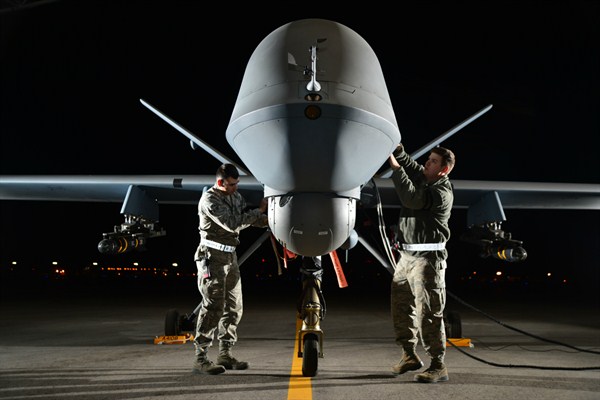Immediately after the recent terrorist attacks in Paris, French President Francois Hollande declared the coordinated attacks as “an act of war.” France did not need such a provocation, however. It had already been involved in U.S.-led airstrikes in Syria against the self-proclaimed Islamic State for six weeks, and in Iraq since September 2014. The question now is where and how it might escalate its involvement militarily. The United States stated that it stands by France and will assist in whatever way necessary. That raises the question of whether U.S. assistance will include arming France’s unmanned aerial vehicles, or drones, and if so what the proliferation consequences would be.
Even absent the recent Paris attacks, the move to arm France’s American-made Reaper drones would not have come form out of left field. Earlier this month, the Obama administration approved Italy’s request to arm its two Reapers, adding it to the U.K. in the thin ranks of countries who have armed, American-made drones. France could become the third.
For some observers, any export of such technology is cause for concern. According to this view, the recent Italy sale represented a potential slippery slope. Italy now, France next—where do the exports stop? Moreover, there is a concern that the technology lowers the threshold for using force. Since drones do not risk any casualties on the side that uses them, military force becomes less costly and, therefore, more tempting to use in ways and places that would be off the table for a manned mission. Drones raise the potential of a battlefield that is limitless both in time and space.

